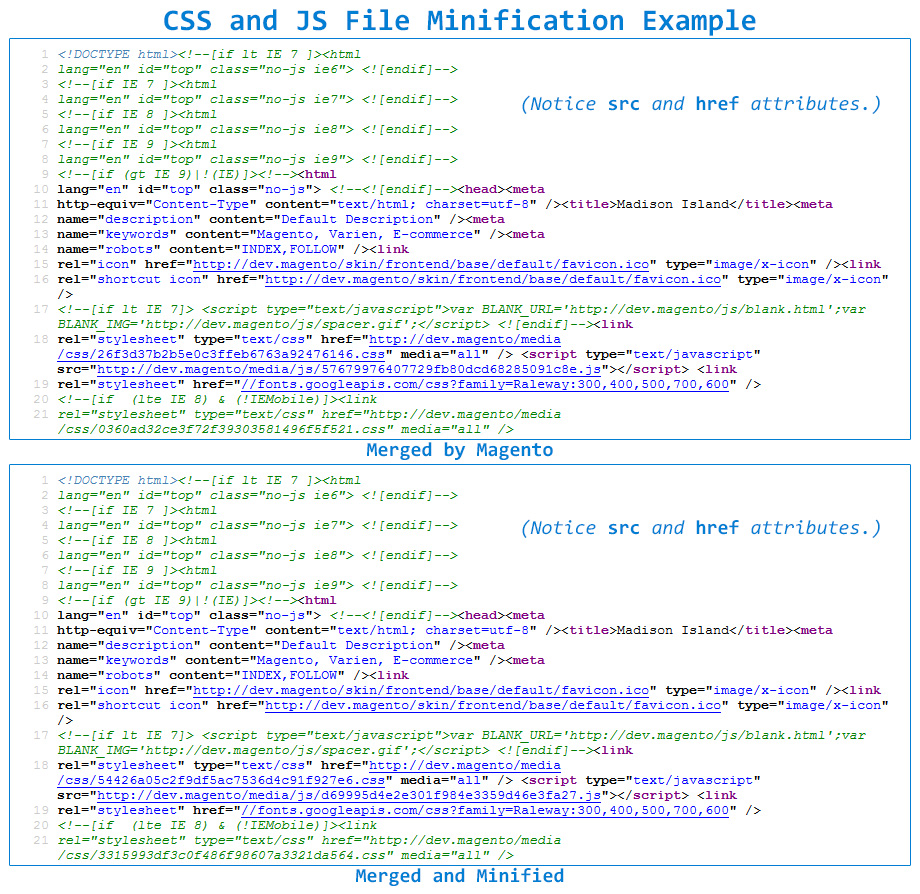

Greater performance gains are realized when using bundling and minification with assets transferred over a network. The load time improved, but this example ran locally. The following table outlines differences between individually loading assets and using bundling and minification for a typical web app.

In addition to removing the comments and unnecessary whitespace, the following parameter and variable names were renamed as follows: Original Common side effects of minification include shortening variable names to one character and removing comments and unnecessary whitespace.Ĭonsider the following JavaScript function: AddAltToImg = function (imageTagAndImageID, imageContext)

The result is a significant size reduction in requested assets (such as CSS, images, and JavaScript files).
Javascript minify code#
Minification removes unnecessary characters from code without altering functionality. This results in improved first page load performance.

Fewer files mean fewer HTTP requests from the browser to the server or from the service providing your application. You can create any number of individual bundles specifically for CSS, JavaScript, etc. Bundling reduces the number of server requests that are necessary to render a web asset, such as a web page. Bundlingīundling combines multiple files into a single file. In this case, bundling and minification provide a performance improvement even after the first page request. Additionally, the browser requires a validation request for each asset. If the expires header isn't set correctly on the assets and if bundling and minification isn't used, the browser's freshness heuristics mark the assets stale after a few days. So, bundling and minification don't improve performance when requesting the same page, or pages, on the same site requesting the same assets. Once a web page has been requested, the browser caches the static assets (JavaScript, CSS, and images). Used together, bundling and minification improve performance by reducing the number of server requests and reducing the size of the requested static assets.īundling and minification primarily improve the first page request load time. What is bundling and minificationīundling and minification are two distinct performance optimizations you can apply in a web app. The script source above, save it, and make it executable.This article explains the benefits of applying bundling and minification, including how these features can be used with ASP.NET Core web apps. To use this script on your system, create a file called "minifyjs", paste in Java -jar $CLOSURE_COMPILER -js = $jsFilePath -js_output_file = $minjsFilePath echo " $jsFilePath minified. JsFilePath = $jsDir/ $jsFile minjsFilePath = $jsDir/ $minjsFile The following gets from myfile.js minjsFile = ` echo $jsFile | rev | cut -d "." -f2- | rev `.min.js # By reversing the string, cutting, and reversing back, we get the desired # effect. "" | "-h" | "-help" ) echo "Usage: minifyjs path/to/js/file.js" exit 1 esac jsDir = `dirname $1 ` jsFile = `basename $1 ` # There's no way to get "from the beginning to the Nth to last field" when # specifying a range via cut, but we can get "from the Nth field to the end". CLOSURE_COMPILER =/usr/local/jar/closure-compiler.jar # The location of the closure compiler jar. # Takes a filename myjs.x.y.js and outputs myjs.x.y.min.js, a minified version. #!/bin/bash # Call the closure compiler to minify js.


 0 kommentar(er)
0 kommentar(er)
